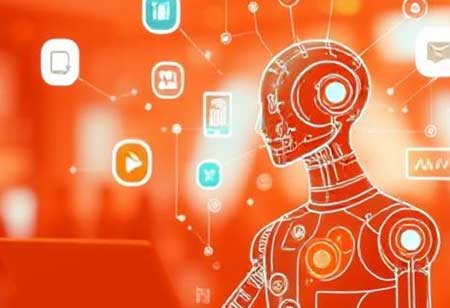THANK YOU FOR SUBSCRIBING
The Rise of Smart Cities in APAC: IoT's Role in Urban Innovation and Industrial Efficiency

By
Apac CIOOutlook | Wednesday, June 11, 2025
Stay ahead of the industry with exclusive feature stories on the top companies, expert insights and the latest news delivered straight to your inbox. Subscribe today.
Fremont, CA: The Asia-Pacific (APAC) region is at the forefront of the global digital transformation, with the Internet of Things (IoT) playing a pivotal role in reshaping its smart cities and connected industries. Driven by rapid urbanization, technological advancements, and supportive government initiatives, the IoT is creating more efficient, sustainable, and responsive environments across the region.
IoT's Impact on Smart Cities in APAC
IoT is not just transforming, but remodeling various aspects of urban life in the APAC region. It's improving traffic management, resource management, public safety and security, environmental monitoring, smart infrastructure maintenance, and hyper-personalization. IoT-enabled sensors and cameras are providing real-time data on traffic patterns, allowing for the adjustment of traffic lights, improving air quality, and optimizing waste management systems. Smart grids and meters are optimizing energy distribution and consumption, with a focus on reducing carbon footprints and integrating renewable energy sources. IoT integration is not just a change; it's a beacon of hope for a safer, more efficient, and more sustainable urban future.
Drivers and Trends in APAC Smart Cities
A confluence of technological advancements and proactive government policies is shaping the rapid evolution of smart cities across the region. Many APAC governments are adopting top-down strategies and committing substantial investments to accelerate smart city development—China, in particular, has emerged as a leading example with its fast-paced implementation efforts. Central to this transformation is the rollout of 5G-Advanced (also known as 5.5G), which is significantly enhancing urban connectivity by delivering higher data speeds, improved spectral efficiency, and ultra-low latency. These capabilities are essential for enabling autonomous transportation systems and real-time public safety applications.
Another critical enabler is the integration of artificial intelligence and the Internet of Things (AIoT), which is fostering intelligent urban ecosystems. This convergence allows for advanced data analysis and automated decision-making, supporting initiatives such as predictive infrastructure maintenance, dynamic traffic management, and personalized public services. Complementing AIoT is the adoption of edge computing, which addresses the surge in IoT-generated data by decentralizing processing closer to the source of the data. This reduces latency and bandwidth demands, which is particularly important for time-sensitive applications, such as autonomous vehicles.
The use of digital twins—virtual models of physical urban assets—is becoming a strategic tool for city planners. These digital replicas enable real-time simulation and analysis of various scenarios, thereby improving decision-making regarding resource allocation, infrastructure upgrades, and disaster response strategies.
IoT's Impact on Connected Industries in APAC
Beyond the realm of smart cities, the IoT is playing a transformative role across various industries in the APAC region, driving automation, operational efficiency, and productivity. Key sectors are experiencing significant advancements due to the integration of IoT. In manufacturing, IoT serves as a fundamental pillar of Industry 4.0, enabling the development of smart factories with capabilities such as automated quality assurance, real-time equipment monitoring, and predictive maintenance. These innovations help reduce downtime, cut operational costs, and improve product quality. In supply chain and logistics, IoT enhances visibility by enabling GPS tracking of assets, real-time condition monitoring of goods, and optimized route planning, all of which contribute to more resilient and efficient supply networks.
The energy and utilities sector is leveraging IoT to enable smart grid solutions, optimize energy management, and implement demand response systems, thereby improving power efficiency and sustainability. In agriculture, IoT-driven smart farming technologies monitor soil conditions, weather patterns, and crop health, enabling precise irrigation and fertilization that enhances yield and conserves natural resources. In healthcare, IoT devices are increasingly utilized for continuous patient monitoring, resulting in improved health outcomes and reduced workloads for medical staff. Additionally, workplace safety is being enhanced through IoT-enabled personal protective equipment (PPE) that monitors environmental hazards, such as toxic gases or extreme temperatures, and issues real-time alerts to prevent accidents and ensure timely interventions.
The APAC region is witnessing a profound transformation driven by the pervasive adoption of IoT in both smart cities and connected industries. From optimizing urban services and enhancing public safety to revolutionizing manufacturing processes and supply chain management, the IoT is proving to be a game-changer. While challenges related to cost, interoperability, and cybersecurity persist, the continuous advancements in related technologies like AI, 5G, and edge computing, coupled with strong government support and a clear understanding of the long-term benefits, position APAC as a global leader in leveraging IoT for a smarter, more efficient, and sustainable future.





